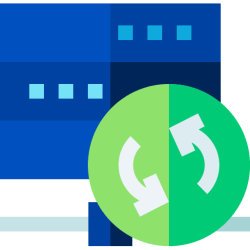If you are not familiar with imaging, here's a "short" intro I put together years ago for another site. Hope it will help:
Disk Imaging software takes a "snapshot" of your drive as it exists at the time you create the image. You can then restore the entire image or any file(s) or folder(s) you choose. It is a virtually foolproof way of backing up your system and providing a safe haven in the event of a catastrophe that requires you to blow away your system partition and restore it to a previous state. It also allows you to "test" various software and be confident that you have a the ability to return to the prior state any time you choose.
I used Acronis True Image for many years, but when they switched to a subscription model rather than outright user ownership, I moved to Macrium Reflect. It is every bit as reliable as Acronis and perhaps a bit more powerful.
1) I create an image of my system partition once a week to a secondary drive, rotating between two drives, and keep the 2 or 3 most recent images on each of those drives. In other words, week 1 the image is stored on secondary disc A and week two the image is stored on secondary disc B. I also image my other partitions about once a month. I always enable "verify image" in the options. It takes a little longer, but insures a valid image (the last thing you want is to try to restore an image only to find it is corrupt - it happens).
2) I also create an image before performing any drive level function (ie, changing the size of a partition) or making any significant change to the OS such as installing a service pack, or even when installing a "questionable" Windows update, etc.
3) Images may be created on any medium (external drive, usb drive, cd's or dvd's, etc). For obvious reasons they should not be stored on the same drive you are imaging. The easiest option is a second internal hd if you have one and, if you're really ambitious, to an external drive as well (one week to the internal & one week to the external or just duplicates on the external - that's actually the procedure I follow).
4) Images may be created "in the background" within the OS. If you need to restore the system partition, that will need to be done before the OS loads. You can start the process within the application in the OS and it will then tell you it needs to reboot to finish the process. Alternatively, you can boot to a "recovery disk" which you create from within the software (or to the application disk itself if you have one). Even easier, you can also use a built in tool to create a rescue environment on the PC itself (when the system first boots you will have the choice of booting to the OS or the rescue environment - the OS option can be an automated choice after "X" seconds so you do not need to make a manual choice every time the system boots). Non-system partitions or drives can be restored without a reboot.








